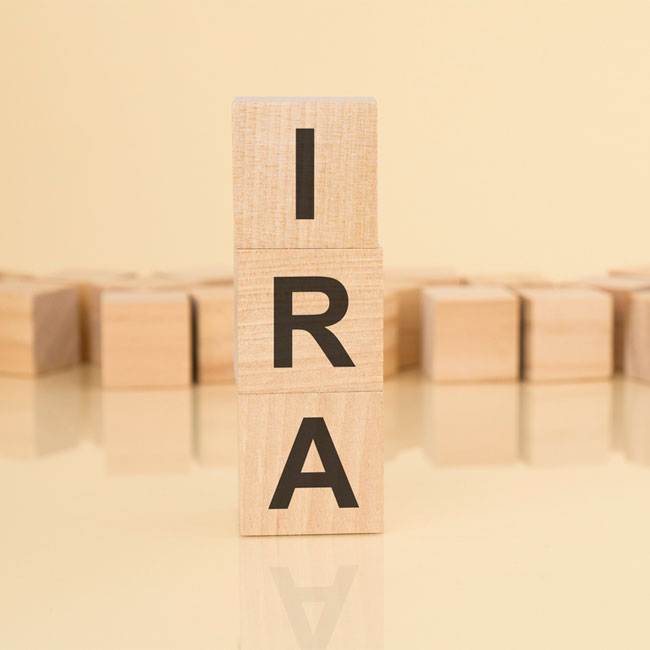
When the original owner of an IRA passes away, the account is not subject to the terms of a will; instead, it will be passed directly to the named beneficiaries. Naming beneficiaries, therefore, is a key part of setting up an IRA. While doing so might sound like a simple process, the multitude of options available can make it complex.
This is especially true following the SECURE Act of 2019. Among other changes, the act made it so that non-spousal beneficiaries must generally withdraw all assets from an inherited IRA within 10 years. Previously, such beneficiaries could stretch distributions out over their life expectancy.
These changes also emphasize the importance of keeping your IRA beneficiaries up to date. Taking the time to re-evaluate your original list will help ensure your assets are distributed the way you’d like them to be. In this article, we’ll outline some of the key considerations when designating IRA beneficiaries.
How to List Individual Beneficiaries
Many IRA owners will choose individuals as beneficiaries of their account. One of the most important elements to understand when naming these individual beneficiaries is the difference between primary and contingent beneficiaries.
Primary beneficiaries are first in line to receive inherited assets. If all of your primary beneficiaries have passed away, however, the assets will flow to your contingent beneficiaries. While not everyone elects to name contingent beneficiaries, doing so creates a backup plan for the distribution of your assets.
For those who are married, the most common primary beneficiary is a spouse. Non-spousal beneficiaries are often chosen as contingent. For those who are unmarried or whose spouse passed away, non-spousal beneficiaries will be chosen as primary. When listing these non-spousal beneficiaries, either in a primary or contingent capacity, it’s important to understand how the benefits will flow to achieve the desired outcome.
One aspect to consider is whether you’d like to distribute the IRA per stirpes or per capita. If you opt for per stirpes, your IRA will be distributed according to family branches. For instance, suppose you list your two sons as your beneficiaries of your $1 million IRA, and “Son 1” has two children, and “Son 2” has three. If both sons were to predecease you, the two children of Son 1 would share half of the account ($250K per child), and the three children of Son 2 would share the other half ($167K per child).
This stands in contrast with a per capita selection. With per capita, if both sons predeceased you, the grandchildren would each split the account equally ($200K per child).
It should be noted that distribution options differ by custodian. As the financial institution responsible for safeguarding the assets in your IRA, your custodian is responsible for distributing those assets appropriately – and not all of them offer per capita distribution. In this case, you may be able to file a special document with the custodian that dictates how you’d like your assets to be distributed, but a trusted attorney can suggest if this is the right course of action.
In order to allocate assets fairly, it’s important to understand how the benefits will flow based on which mechanism you choose. A trusted wealth management partner can help you think through the variety of situations that could occur.
Of course, it’s not only individuals who can be listed as beneficiaries. Sometimes, it’s advantageous to designate a trust to inherit your IRA.
How to List Trust Beneficiaries
A trust can be a flexible tool to help distribute your IRA appropriately. A common strategy is to list your spouse as a primary beneficiary and a trust as the contingent beneficiary, a structure that can be molded to suit most inheritance goals.
However, after the changes resulting from the SECURE Act, some trusts may be out of date. The 10-year rule, which requires non-spousal beneficiaries to withdraw all IRA assets within 10 years, also applies to trusts.
If you’ve created a trust plan in anticipation of being able to draw distributions from the IRA over a longer timeline, that plan will need to be revised. Trusts can still be utilized as beneficiaries, but it’s important to work with knowledgeable professionals to ensure that they’ve been updated to align with the new rules.
Ultimately, the new rules have made IRAs more inefficient to inherit, due to the accelerated timeline of withdrawals, which accelerates and potentially increases the tax liability on the distributions. For that reason, some people choose to leave their IRAs to charity. This can also be an effective strategy to minimize potential estate taxes.
A Donor Advised Fund (DAF) is one such way to do this. By designating a DAF as your IRA beneficiary, the fund will inherit the assets and can distribute them to charity. Your heirs can even serve in an advisory role to help pick the charities.
Closing Thoughts
While naming IRA beneficiaries may seem simple, there’s an underlying complexity to the process. At RVP, we help our clients name their beneficiaries properly to ensure their assets are left to the next generation according to their wishes.
This guidance is particularly important in the wake of the recent IRA changes resulting from the SECURE Act. Keep in mind that changes to beneficiary designation can always be made, so nothing is set in stone. If you’d like to review your IRA beneficiaries or any aspect of your inheritance plan, we invite you to reach out to our office.
Relative Value Partners merged with Kovitz Investment Group Partners, LLC as of August 2024. All Insights are opinions of the author as of the posting date. Any graphs, data, or information in this publication are considered reliably sourced, but no representation is made that it is accurate or complete, and should not be relied upon as such. This information is subject to change without notice at any time, based on market and other conditions. Past performance is not indicative of future results, which may vary.